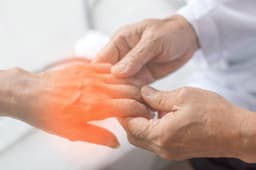Published on:
5 min read
Unlocking Relief: Your Comprehensive Guide to Managing Joint Pain
Dealing with joint pain can be challenging, but understanding your options is the first step in finding relief. This guide provides practical strategies and expert insights to help you effectively manage your discomfort and improve your quality of life.

Understanding Joint Pain
Joint pain can stem from a variety of causes, including arthritis, injury, or overuse. It affects millions of people worldwide and can range from mild discomfort to severe pain, significantly impacting daily activities. Understanding the underlying reason for your joint pain is crucial for effective management. Common conditions like osteoarthritis and rheumatoid arthritis have unique characteristics and treatment protocols. Consulting with a healthcare professional for an accurate diagnosis can lead to tailored treatment options, allowing you to return to your daily life with confidence. By recognizing the signs and symptoms, you can take the necessary steps toward managing your discomfort.
Lifestyle Modifications for Pain Relief
Implementing lifestyle changes can significantly alleviate joint pain. Regular exercise, especially low-impact activities such as swimming or cycling, strengthens muscles around joints, enhancing stability and reducing stress on the joints themselves. Maintaining a healthy weight is also vital; excess weight can exacerbate joint pain, particularly in weight-bearing joints like the knees and hips. Additionally, a balanced diet rich in anti-inflammatory foods—such as leafy greens, nuts, and fatty fish—can contribute to overall joint health. Staying hydrated and managing stress through practices like yoga or mindfulness can also support pain management. Remember, small, consistent changes can lead to significant improvements over time.
Treatment Options: What Works?
When it comes to managing joint pain, there are numerous treatment options available. Over-the-counter medications like NSAIDs help reduce inflammation and relieve pain. For more severe cases, prescription medications or corticosteroid injections may be necessary. Physical therapy is another effective route, focusing on strengthening and improving flexibility. For some, alternative therapies such as acupuncture or massage therapy offer significant relief. Additionally, certain supplements, like glucosamine and chondroitin, may support joint health; however, it's essential to discuss these with your doctor. Ultimately, finding a combination of approaches that work for you may take some time, but it’s a worthwhile endeavor for your long-term health.
Conclusion: Taking Control of Your Joint Health
Managing joint pain is about more than just treating symptoms; it involves a holistic approach to maintaining overall joint health. By understanding your condition and making strategic lifestyle modifications, coupled with appropriate treatments, you can unlock effective relief. Don't hesitate to seek professional guidance to ensure tailored support on your journey. Remember, proactive steps can significantly enhance your quality of life and empower you on the road to recovery.
Published on .
Share now!










